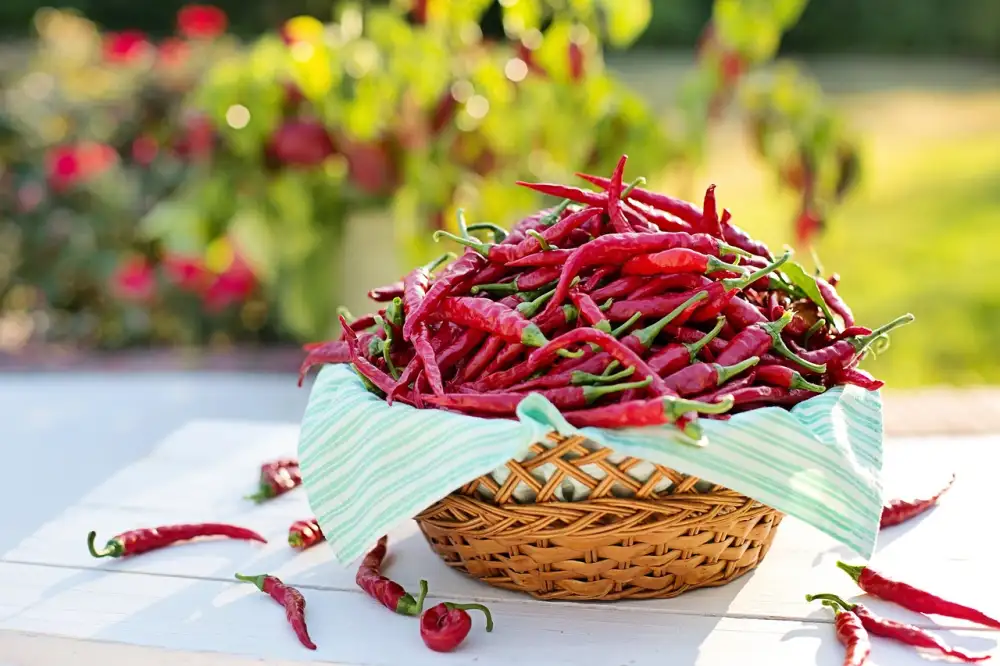Spice Up Your Kitchen: Easy Steps to Make Flavorful Chilli

Chili, a hearty and flavorful dish, is a favorite among food enthusiasts. Whether you're hosting a gathering or simply craving a comforting meal, learning how to make chili is a skill worth mastering. This versatile dish can be customized to suit your taste preferences, from mild and comforting to spicy and bold. In this article, we will guide you through the easy steps to create a delicious and flavorful chili that will leave your taste buds wanting more. So let's dive in and spice up your kitchen with this mouthwatering recipe!
Gather the ingredients for chili
To make a flavorful chili, it is essential to gather the right ingredients. Start by collecting 1 pound of ground beef, preferably lean. You will also need 1 onion, diced, and 2 cloves of garlic, minced. For the base of the chili, gather 1 can of diced tomatoes and 1 can of tomato sauce. Don't forget to grab your favorite beans – kidney beans or black beans work well – and drain them before use. To add depth to the flavor, include 1 tablespoon of chili powder, 1 teaspoon of cumin, and a pinch of cayenne pepper for some heat. Lastly, prepare some garnishes like shredded cheese, sour cream, and chopped cilantro for serving. With these ingredients on hand, you are ready to create a delicious pot of chili that will satisfy any craving!
Prepare the vegetables for chili
To prepare the vegetables for chili, start by washing and chopping them. Dice onions, bell peppers, and garlic cloves into small pieces. For a milder flavor, remove the seeds and membranes from the bell peppers. Next, peel and dice tomatoes or use canned diced tomatoes for convenience. If you prefer a chunkier texture, leave the tomatoes in larger pieces. Finally, rinse and drain any canned beans you plan to add to your chili. Preparing the vegetables beforehand will ensure they cook evenly and blend well with other ingredients in your flavorful chili.
Cook the ground beef for chili
Add the spices and seasonings to the chiliOnce the ground beef is cooked, it's time to add a burst of flavor to your chili by incorporating spices and seasonings. Start by adding chili powder, cumin, paprika, and oregano for that classic chili taste. For an extra kick, you can also include cayenne pepper or red pepper flakes. Don't forget to add salt and black pepper to enhance the overall seasoning. Stir everything together and let the spices meld with the meat for a few minutes before moving on to the next step. The aroma alone will make your mouth water in anticipation of the final dish.
Incorporate the vegetables into the chili
To incorporate the vegetables into the chili, start by adding diced onions to the pot. Sauté them until they become translucent and slightly caramelized, which will enhance their flavor. Next, add minced garlic and cook for another minute until fragrant.
Now it's time to add the other vegetables. You can use diced bell peppers for a pop of color and sweetness. If you like some heat, add chopped jalapenos or serrano peppers. For added depth of flavor, consider including diced carrots or celery.
Stir in the vegetables and let them cook for a few minutes until they start to soften. This will allow their flavors to meld with the onions and garlic. The combination of these aromatic ingredients will create a tantalizing aroma that fills your kitchen.
Remember not to overcook the vegetables as you want them to retain some crunchiness. This will provide a nice contrast to the tender meat and creamy beans in your chili.
Once the vegetables have cooked slightly, it's time to move on to the next step: simmering the chili to enhance its flavors even further.
Simmer the chili to enhance flavors
Simmering the chili is a crucial step that allows all the flavors to meld together and intensify. Once you have added the vegetables, spices, and seasonings, it's time to let the chili simmer on low heat. This slow cooking process allows the ingredients to release their natural oils and flavors, creating a rich and robust taste.
As the chili simmers, make sure to stir occasionally to prevent sticking or burning. The longer you simmer, the more time the flavors have to develop and deepen. Aim for at least 30 minutes of simmering, but if you have more time, let it go for an hour or two.
During this time, the chili will thicken as some of the liquid evaporates. If you prefer a thicker consistency, continue simmering until desired thickness is achieved. If it becomes too thick, you can always add a little water or broth to thin it out.
Simmering also helps tenderize any tough cuts of meat that may be in your chili. The low heat breaks down collagen in the meat fibers, resulting in tender and succulent bites.
Remember that patience is key when simmering chili. Allow enough time for all the flavors to mingle and transform into a harmonious blend that will tantalize your taste buds.
Once your chili has reached its desired flavor profile, turn off the heat and let it rest for a few minutes before serving. This resting period allows all those beautiful flavors to settle and come together even more.
Simmering truly enhances the flavors of your chili and takes it from good to exceptional. So be sure not to rush this step – give your chili ample time on low heat so that every spoonful bursts with deliciousness!
Serve and garnish the chili
Tips for making the perfect chili1. Use a combination of chili powders: Experiment with different types of chili powders, such as ancho, chipotle, and cayenne, to achieve a complex and well-rounded flavor.
2. Toast your spices: Before adding them to the chili, toast your spices in a dry skillet over medium heat for a few minutes. This will enhance their natural flavors and aromas.
3. Don't skimp on the onions and garlic: These aromatic ingredients form the base of your chili and add depth of flavor. Be generous with them!
4. Add a touch of sweetness: A small amount of brown sugar or honey can balance out the heat and acidity in your chili, creating a harmonious taste.
5. Let it simmer: Allow your chili to simmer on low heat for at least an hour to allow all the flavors to meld together and develop a rich taste.
6. Adjust seasoning gradually: Start with less salt and spice, then gradually add more according to your taste preferences. It's easier to add more than to remove excess seasoning.
7. Use quality meat: Opt for lean ground beef or a combination of ground beef and pork for a flavorful and tender texture.
8. Add beans at the right time: If using beans in your chili, add them towards the end of cooking to prevent them from becoming mushy.
9. Taste test along the way: Regularly taste your chili as it cooks so you can adjust seasonings or make any necessary tweaks before serving.
10. Let it rest: After cooking, let your chili rest for about 15 minutes before serving. This allows the flavors to further develop and ensures a more enjoyable eating experience.
By following these tips, you'll be able to create a delicious and satisfying bowl of homemade chili that will impress even the most discerning palates!
In conclusion, making chili is a delightful culinary adventure that allows you to experiment with flavors and create a dish that is uniquely yours. By following these easy steps, you can spice up your kitchen and enjoy a flavorful bowl of chili. Remember to gather fresh ingredients, prepare the vegetables with care, cook the ground beef to perfection, and add the right combination of spices and seasonings. The key is to let the chili simmer slowly to develop rich flavors. Don't forget to garnish your chili with toppings like cheese, sour cream, or cilantro for an extra burst of taste. With these tips in mind, you'll be well on your way to creating the perfect bowl of chili that will satisfy even the most discerning taste buds. So go ahead, grab your apron, and get ready to embark on a delicious journey into the world of chili-making!
Published: 20. 11. 2023
Category: Food



